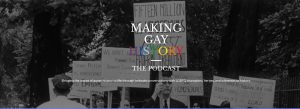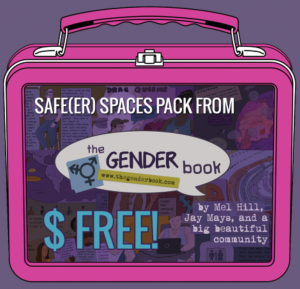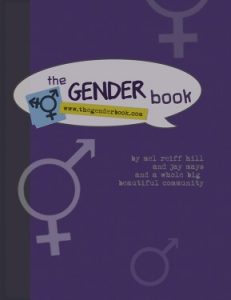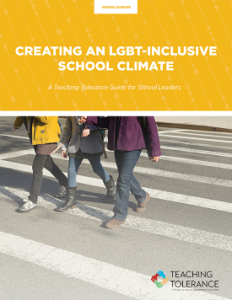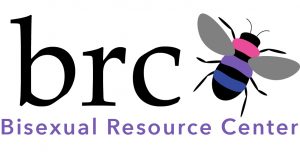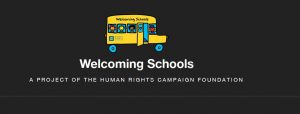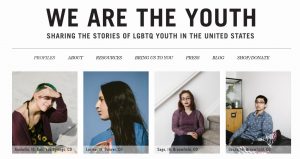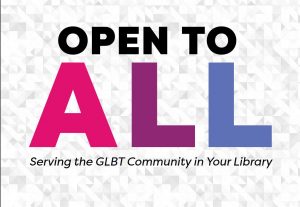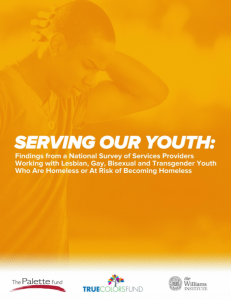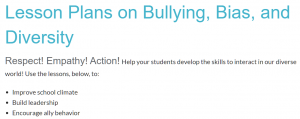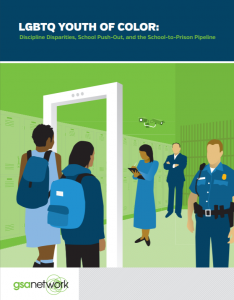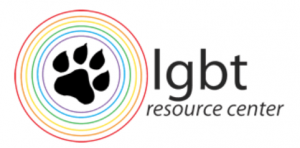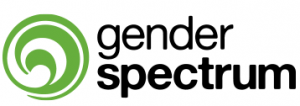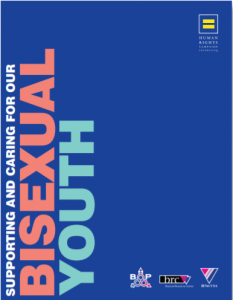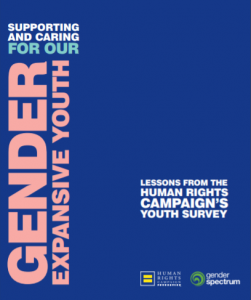Description: The Making Gay History podcast draws on audio archives of rare interviews conducted by Eric Marcus for his award-winning oral history of the LGBTQ civil rights movement. The podcasts (3 seasons worth so far) provide “intimate, personal portraits of both known and long-forgotten champions, heroes, and witnesses to history.”
Category: LGBTQ+ (Page 1 of 2)
Format:  Website, resource list
Website, resource list
Description: YA Pride (previously GayYA) is a site that is dedicated to LGBTQIA in young adult fiction. The site features guest posts, author interviews, giveaways, booklists sorted by character orientation, and book reviews. The team has a presence on multiple social media outlets such as Twitter, Tumblr, Instagram, and Facebook. The booklists featured on the Masterlist section of the site and are sorted by character orientation and includes the following lists: Gay, Lesbian, Bisexual, Transgender, Intersex, Asexual, and Aromantic.
Link: http://www.gayya.org
Citation: YA Pride. (2012). Retrieved from http://www.gayya.org
Description: A bundle of resources available on the Gender Book website that includes a Prezi presentation, a six-page Gender Booklet on some basics covered in the Gender Book, postcards, business cards, and educational posters. This pack was put together to be used in schools and other educational environments.
Link: http://www.thegenderbook.com/safer-spaces-pack/4583019812
Format: Website, resource list
Description:
This website offers a bibliography of YA fiction with LGBTQ content published between 2000 and 2017. The database seeks to be comprehensive and features books published by major and minor presses, and is working on adding self-published works. The site offers a variety of facets to search the database and find content, includes several best of/ and recommendation lists, linked resources for teens and educators/librarians, and information on their scope and information organization. The site was created by an assortment of contributors, with the support of the Carnegie/Whitney Grant from the American Library Association and the GLBT-RT resources committee.
Description: The Gender Book is a website for a 90 page book with graphics on many topics concerning gender. The book was created by four authors of varying identities with the aid of surveys, interviews and community collaborators from all around the world. The book is available in a pay-what-you-want e-book format, or print copies can be purchased for $30 (hardcover) or $300 for a class set. The book is available on the website as a text only version, in large print, and translated into German and Spanish. The website also offers other resources available to viewers, like the free, online, 6 page Gender booklet covering some basics from the Gender Book educational posters and creator contacts. The authors of the project can be contacted for public speaking events through their site.
Link: http://www.thegenderbook.com/home/4553374745
Citation:
Mays, J. & Reif Hill, M. (2014). The gender book. Houston, TX: Marshall House Press.
Format: Article
Description: A 4-page pdf handout from the University of Wisconsin-Oshkosh LGBTQ Resource Center with information on creating an inclusive environment, such as including LGBTQ topics in curriculum and handling “hot moments” in classroom discussion.
Link: http://www.uwosh.edu/lgbtqcenter/faculty-staff/CreatingAnLGBTQInclusiveClassroom.pdf
Description: This downloadable article provides advice for school leaders wanting to create a LGBT inclusive school climate. The article covers such topics as Gay Straight Alliance club, clothing and dress codes, school events, anti-bullying policies, conversion therapy and more.
Link: https://www.tolerance.org/magazine/publications/creating-an-lgbtinclusive-school-climate
Citation: Teaching Tolerance. (2013). Creating an LGBT-inclusive school climate. Retrieved from https://www.tolerance.org/magazine/publications/creating-an-lgbtinclusive-school-climate
Description: Trans Student Educational Resources (TSER) is an organization lead by trans youth who are dedicated to improving experiences for trans and gender nonconforming students by educating others and training activists. The organization provides information on policy, helpful infographics, available queer youth conferences, and more. The TSER also has a number of workshops they they are available to present to help professional development and representatives from the organization are also available as public speakers.
Description: The ABCs of LGBT is a popular LGBT book by Ashley Mardell that helps readers who want to learn to talk about gender and sexual identity. The book offers answers to frequently asked questions, in depth definitions, helpful infographics and more. The book is available in print and ebook formats at prices ranging from $6 to $15.
Link: https://www.goodreads.com/book/show/28783749-the-abc-s-of-lgbt
Citation: Mardell, A. (2016). The ABCs of LGBT. Coral Gables, Fl: Mango Media
Description: The Transgender Law Center’s (TLC) Youth Legal and Policy Work page presents information on some of the legal cases, and policies they have worked on in defense of transgender and gender nonconforming youth and their families, and their rights. They also provide information on requesting legal information and to other Youth related resources from the TLC like their TRUTH program, a national storytelling campaign for trans and gender nonconforming youth. The TLC is available to aid schools and other organizations with legal advice and practices.
Format: Resource  List, Tool, Website
List, Tool, Website
Description: The LGBTQ section of the Movement Advancement Project provides viewers with a number of resources on the challenges and strengths of LGBTQ youth. The page includes infographics, reports, and tools on such topics as transgender students and Title IX of the Federal Civil Rights Act, national conversion therapy laws and bans, school facilities access, incarceration, and more.
Link: http://www.lgbtmap.org/policy-and-issue-analysis/LGBTQ-youth
Description: A resource list from the Bisexual Resource Center on building safe, inclusive spaces for bisexual+ youth (defined by the BRC as an umbrella term for multi-gender attraction including pansexual, fluid, omnisexual, queer, etc.). This list includes resources on dealing with biphobia, creating bi-inclusive spaces, and being an ally.
Link: https://biresource.org/resources-for-building-safer-spaces/
Format: Article
Description: A Huffington Post article, fist published in Rethinking Schools Magazine in the fall of 2009, on how the school environment, and teachers specifically, can alienate trans, non-binary, questioning and other gender-variant individuals, as well as the power of vocabulary in discovering your identity. The first entry is a personal ‘our voices’ point of view, while the second is from the POV of a mom and teacher.
Link: https://www.huffingtonpost.com/ericka-sokolowershain/when-the-gender-boxes-dont-fit_b_1367643.html
Citation: Sokolower-Shain, E. & Sokolower, J. (2012, March 22). When the gender boxes don’t fit. The Huffington Post. Retrieved from https://www.huffingtonpost.com/ericka-sokolowershain/when-the-gender-boxes-dont-fit_b_1367643.html
Description: Welcoming Schools is a project of the Human Rights Campaign Foundation. On their website they provide resources for elementary educators to: welcome diverse families, create LGBTQ and gender inclusive schools, prevent bias-based bullying, and support transgender and non-binary students. The website includes research and data, laws and policies, tips, films, and lesson plans. While the focus is on schools, the resources can be used by library staff to ensure that their programs, services, and collections are welcoming to youth ages 5-11 and their families.
Link: http://www.welcomingschools.org/
Description: We Are the Youth is a photographic journalism project chronicling the individual stories of queer youth in the United States. The project aims to capture the incredible diversity and uniqueness among LGBTQ youth. Since June 2010, We Are the Youth has profiled more than 100 young people across the United States, thus making their lives and experiences visible in an honest and respectful way.
Description: Developed by the ALA GLBT roundtable, this toolkit gives a brief yet wide-ranging overview of best practices for serving LGBTQ+ populations and covers a variety of topics including user needs, collection development, terminology, programming, outreach, and recommended reading. There is also a list of practical tips to make the library a more welcoming place.
Format: Resource list / website
Description: This resource list, created by Julie Ann Winkelstein, PhD, MLIS (jwinkels@utk.edu) and presented at the 2013 ALA Annual Meeting, provides resources library staff can use to learn more about youth who are experiencing homelessness, especially LGBTQ youth, and to develop inclusive services that directly support the needs of these youth.
Link: http://www.ala.org/rt/glbtrt/tools/homeless-lgbtq-youth
 Format: Website
Format: Website
Description: GLSEN is the leading national education organization focused on ensuring safe and affirming schools for LGBTQ+ students.. Their national reports examine many aspects of school safety for LGBTQ+ youth, from elementary school students’ and teachers’ experiences, to the interactions LGBT parents have had with staff at their children’s’ schools.
Link: https://www.glsen.org/learn/research/national
Description: The Serving Our Youth report features the data from a national, web-based survey of agencies serving homeless youth run from October 2011 to March 2012. The report details the LGBT populations served, who is most at risk, and why those populations are most at risk.
Citation: Durso, L.E., & Gates, G.J. (2012). Serving our youth: Findings from a national survey of service providers working with elsbian, gay, bisexual, and transgender youth who are homeless or at risk of becoming homeless. Los Angeles: The Williams Institute with True Colors Fund and The Palette Fund. Retrieved from http://williamsinstitute.law.ucla.edu/wp-content/uploads/Durso-Gates-LGBT-Homeless-Youth-Survey-July-2012.pdf
Format: Resource list, lesson plans & curriculum
Description: A resource list created by GLSEN, listing lesson plans focused on countering bullying in the school culture by expanding the directions of the curriculum and championing good ally behavior. The included lessons discuss transphobia, misgendering, and ableist language.
Link: https://www.glsen.org/educate/resources/lesson-plans
Description: A small resource list created by GLSEN, listing lesson plans, curriculum guides, toolkits, and other helpful aids for a LGBT-Inclusive Curriculum. The included lessons briefly touch upon history, respectful social behavior, and important people, among other topics.
Description: A set of three collaborative reports between GSA Network and Crossroads Collaborative connected to LGBTQ Youth and School Pushout released in 2014. The findings in these reports discuss how LGBTQ and gender non-conforming youth, especially youth of color, disproportionately face not just bullying from peers but more policing, harsher restrictions, and discipline from school staff and administration. These reports are also accompanied by a small handout created by the Advancement Project and GSA Network on policy recommendations to help change the strenuous school climate for these youths.
PDF Link: https://gsanetwork.org/Pushout-Report
Citation: Burdge, H., Licona, A. C., Hyemingway, Z. T. (2014). LGBTQ youth of color: Discipline disparities, school push-out, and the school-to-prison pipeline. San Francisco, CA: Gay-Straight Alliance Network and Tucson, AZ: Crossroads Collaborative at the University of Arizona. Retrieved from https://gsanetwork.org/files/aboutus/LGBTQ_brief_FINAL-web.pdf
Burdge, H., Hyemingway, Z. T., Licona, A. C. (2014). Gender nonconforming youth: Discipline disparities, school push-out, and the school-to-prison pipeline. San Francisco, CA: Gay-Straight Alliance Network and Tucson, AZ: Crossroads Collaborative at the University of Arizona. Retrieved from https://gsanetwork.org/files/aboutus/GSA_GNC_FINAL-web.pdf
Advancement Project and GSA Network. (2014). School discipline disparities recommendations. San Francisco, CA: Gay-Straight Alliance Network and Washington, DC: Advancement Project. Retrieved from https://gsanetwork.org/files/aboutus/Recommendations_final.pdf
Description:
A webpage provided by the University of Winconsin Milwaukee’s LBGT Resource Center on the usage of varied Gender Pronouns, including an FAQ section and a How-To Guide.
Description: A list of varied educational resources on the Gender Spectrum website that are focused on creating gender inclusive schools and communities.
Link: https://www.genderspectrum.org/resources/education-2/
Format: Assessment
Description: A tool created by Gender Spectrum, an organization that aims to help create gender sensitive and inclusive environments for all children and teens. This tool can help you and your colleagues assess the gender inclusiveness of your environment, where you may be lacking, and help you to narrow what your focus should be.
PDF Link: https://www.dropbox.com/s/duc1wn5zgo2j2zs/Gender_Inclusive_Assessment_Tool_080617.pdf?dl=0
Description: An article originally published in the American School Counselor Association magazine (May/June 2017) which lists strategies and actions individuals can take to communicate directly with youth and encourage their schools to be more gender-inclusive.
PDF Link:
https://www.genderspectrum.org/blog/asca-safehavens/
https://www.genderspectrum.org/staging/wp-content/uploads/2017/05/Safe-Havens.pdf
Citation:
Westheimer, K. (2017). Strategies to create safe havens for students. Gender Spectrum. Retrieved from https://www.genderspectrum.org/staging/wp-content/uploads/2017/05/Safe-Havens.pdf
Format: Article
Description: A pdf from the Gender Spectrum website on 12 easy steps on the way to gender inclusiveness. This document gives 12 simple steps, changes in attitude, and day to day activities an individual can make to start working towards a more gender inclusive environment.
PDF Link: https://tinyurl.com/GenderInclusion
Citation: Gender Spectrum (n.d.). Twelve easy steps towards gender inclusion. Retrieved from https://www.dropbox.com/s/am19758yamrqp61/12%20Easy%20Steps%20Towards%20Gender%20Inclusion_112514.pdf?dl=0
Format: Video, Training, Lesson Plans and Curriculum
Description: Free video training and curriculum based on Trevor’s in-person workshop, designed to aid youth-focused adults bring lessons into classrooms on challenges faced by LGBTQIA+ youth, recognizing suicide warnings, and preventing crises. The linked page contains a 16 minute video and a 20 minute webinar, and many additional resources.
Link: https://www.thetrevorproject.org/education/lifeguard-workshop/
Description: A report based on data gathered by the Human Rights Campaign (HRC) in their 2012 Youth Report, and presented in collaboration with BiNet USA, the Bisexual Organizing Project, and the Bisexual Resource Center. This report covers youth who identify as bisexual, pansexual, or queer, and presents the personal and social challenges these youth face in their communities. Includes information on being an ally and additional resources.
PDF Link: http://www.hrc.org/youth-report/supporting-and-caring-for-our-bisexual-youth/
Citation:
Description: A report released in 2014 which explores the growing expression and understanding of gender identity among youth today, their experiences, and the challenges they face. This report uses data gathered by the Human Rights Campaign (HRC) in their 2012 Youth Report, and presented in collaboration with the organization Gender Spectrum. Includes information on being an ally and additional resources.
PDF Link: https://www.genderspectrum.org/staging/wp-content/uploads/2014/12/HRC_report.pdf
Citation:
